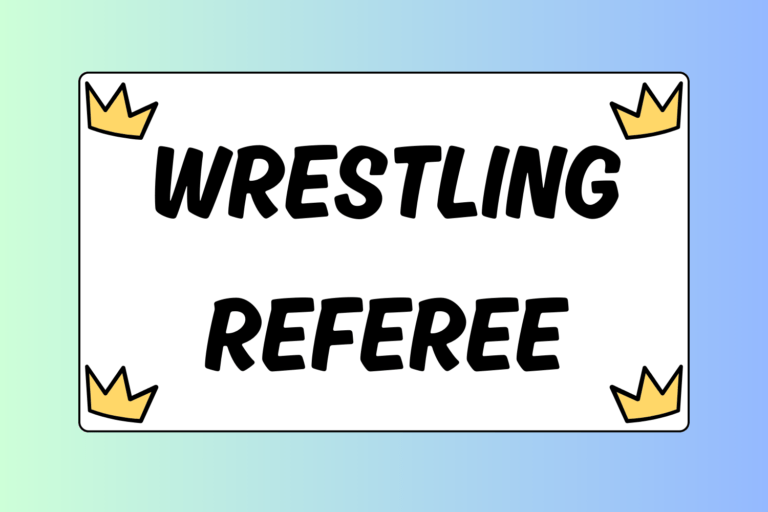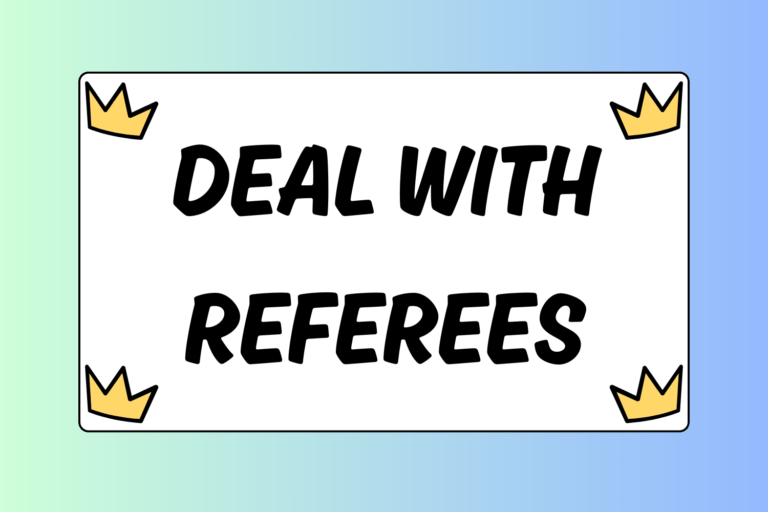Par Terre is commonly used in international styles of wrestling. In Greco-Roman, for example, par terre is used during the ordered hold position to determine a winner in a period when the score is tied. Par terre is less frequently used in freestyle competition, but wrestlers may still be ordered into it by the referee.
This guide will teach you everything you need to know about starting in par terre. You will learn how the traditional par terre positions work from the bottom up, and you’ll receive helpful tips that will give you an edge against your competition.
Starting from the Bottom in Par Terre
This first thing you need to know to get into the bottom position is how to use the mat. Depending on the type of competition and level of wrestling, the center circle and starting lines may be constructed differently. There will typically be two starting lines, set 40 centimeters apart, used as a guide for the placement of your hands and knees. These are named the “hand line” and the “knee line.” On the opposite sides of each line are two dots. While facing the referee you will place both of your hands and knees directly on each set of dots.
With your hands and knees in the correct position on the dots, and with your stomach facing the mat, keep your arms straight and your back flat, like a table. Your feet must remain apart — do not cross them. The most important part of your body positioning is the angle of your hips and torso, which should form a 90-degree angle with the mat.
Referees will look closely at this angle and may correct you if your body is in the wrong position. A referee might also ask you to correct your body positioning at the request of your opponent. If you are uncooperative with the referee’s directions, you will be cautioned. If you remain uncooperative, your opponent will be awarded one or two points. These penalty points (against you) are assessed on an individual basis at the discretion of the referee. Make sure to listen closely to the referee and cooperate at all times!
Once you are set in the correct bottom position, your opponent will cover you as he gets into his top starting position. When your opponent touches your shoulders, the referee will blow his whistle and wrestling will start. From this point forward, you must start to defend against your opponent’s attack by flattening out and getting your hips to the mat as quickly as possible. Your opponent will be working for a body lock, or other similar technique, and will try to control you on the way down. Make sure to drop as quickly as you can, keeping your hips flat against the mat.
Hot Tip: A Slight Advantage
The quicker you can get your body flat against the mat and get moving, the greater your chances of not being scored on. This is why many of the world’s best wrestlers try to use a slight advantage: Tilt your hips towards the mat while in the starting position, forming an angle between their hips, torso, and mat that is slightly greater than 90 degrees. This allows you to get your hips against the mat more quickly than you normally would.
The referee, or your opponent, might catch on to what you are doing and you’ll be asked to correct your body positioning. If this happens, cooperate. Regardless, it’ll never hurt to try and gain an advantage before the round starts!
Starting from the Top in Par Terre
The traditional par terre start is used in freestyle and can also be used in the ordered hold position in Greco. All wrestlers must learn the basics of the traditional start if they want to be successful at any level. Follow these steps when using the traditional par terre start:
- Start behind your opponent: Always stay behind your opponent as they are getting set in the bottom position. This way, you can form a strategy or examine your opponent’s body positioning. When you’re ready to start, place one or both knees on the mat behind your opponent. You are not allowed to push or put pressure on any part of your opponent’s body from here.
- Position your hands: Put your hands together so both index finders and thumbs touch. This will form the shape of a diamond between both hands. Slowly bring your hands up and over your opponent’s body. This signals to the referee that you are ready to start.
- Touch & go: Finally, place your hands on your opponent’s shoulders. Once you do this, the referee will blow his whistle and wrestling will start. Be prepared to attack your opponent as he tries to flatten out against the mat. Try to get a quick body lock or use another offensive maneuver before he can get his body in position to defend against you.
The Reverse Lock
If you choose to start using the reverse lock, use the starting lines to help guide you into position. While standing, one foot may be placed within the center rectangle closest to your opponent’s midsection. Your other foot may be placed behind the knee line. You may not place a foot in front of the hand line. Position your body so you face your opponent’s legs. You are allowed to touch your opponent with your legs, but you are not allowed to push or put pressure on any part of your opponent’s body. From here, you will do two things:
- Bend & reach: Bend your knees and reach around your opponent’s waist in a reverse body lock or an upside down belt hold.
- Lock your hands: Once you lock your hands around your opponent’s waist, the referee will instantly blow his whistle and wrestling will start. Be ready to lift and throw!
Apply Your Knowledge
Understanding how the top and bottom par terre position works can be a determining factor for your success in freestyle and Greco-Roman competition. Being familiar with both positions will give you the edge against your competition, and you’ll win more matches in the long run. For more in-depth information on the rules of the par terre position, check out the our Rules & Regulations for wrestling. Now get on the mats, apply your knowledge, and dominate the competition!





